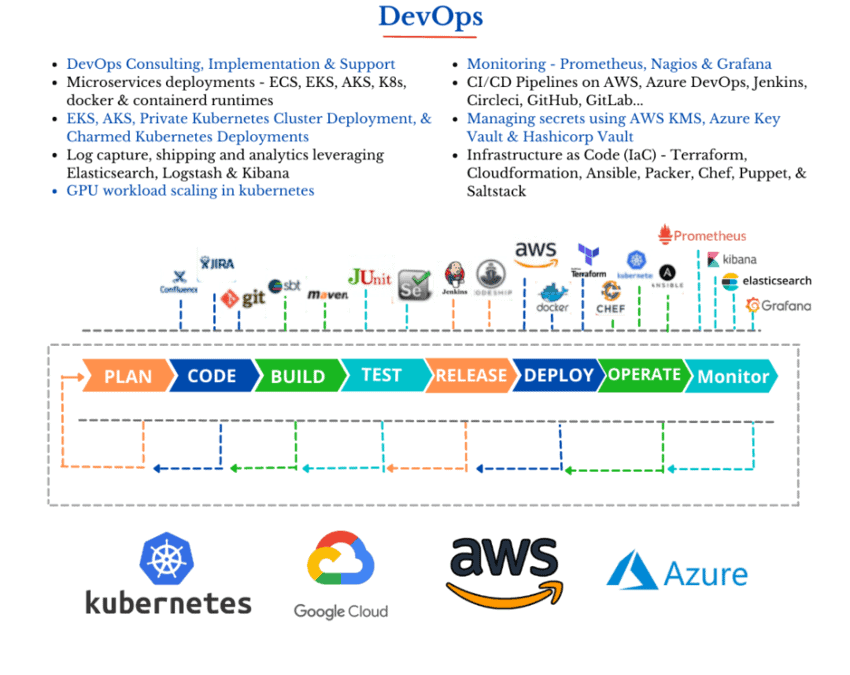DevOps is a combination of software development and IT operations. DevOps focuses on the systems development life cycle. DevOps has effective tools to help teams quickly and efficiently deploy. Because of this tools help teams manage complex environments at scale and keep engineers in control of the High-Velocity pace.
Similarly, DevOps helps in delivering applications and services to expand an organization’s ability. So it enables the combined benefit of the People, Processes, and Technology, that continually provide value to customers. Many DevOps aspects came from the Agile methodology.
Following are the DevOps Tools consisting of phases:
PLAN: Collaboration and Discussion of product development.
CODE: Developing the code with Github.
BUILD Continuous integration.
TEST: Testing the production environment.
RELEASE: Automation and management.
DEPLOY: Deploy the tools to the production environment.
OPERATE: Manage the end-to-end delivery.
MONITOR: Monitoring and logging software performance.
Let’s know these DevOps tools in detail
Plan :
The first phase is the least automated phase, involving collaboration, discussion, review, and strategy of security analysis. Teams should perform a security analysis and also create a plan that outlines where, how, and when security testing will be done.
Code :
The second code phase helps developers write more secure code. Some tools such as confluence, git, and Jira help DevOps teams to surely achieve a seamless and efficient project management cycle as well as ensure timely product delivery.
Build :
The Third build phase begins once developers commit code to the source repository. The DevOps tools help with continuous integration so that it is repeated as a part of the development process. For the purpose of automated security analysis against the build output artifact, the DevOps build tool focus.
Test :
The fourth test phase is triggered after a build artifact is created and successfully deployed to staging or testing environments. A comprehensive test suite takes a considerable amount of time to execute.
Release :
In the fifth release phase, ready for deployment into a production environment. This phase focuses on securing the runtime environment infrastructure by examining environment configuration values such as user access control, network firewall access, and secret data management.
Deploy :
This sixth phase is for deploying the tools in the production environments. Deploying tools ensures not only consistant multiple developments but also release cycles it provides relatable development, builds, and production environments.
Operate :
The seventh operating phase is to manage the end-to-end delivery of IT services. Similarly, It supports the organization’s services for the design, implementation, deployment, and maintenance of all IT infrastructure.
Monitor :
The last equally important phase is Monitor. Security is necessary when the application is deployed and stable in a live environment. In short monitor the phase to observe any attack or damage.

